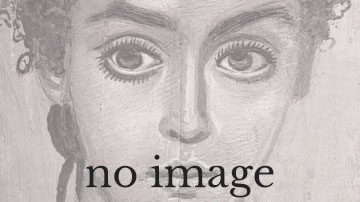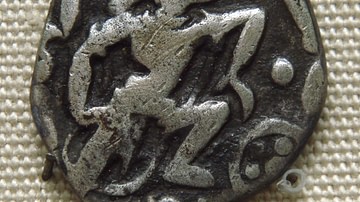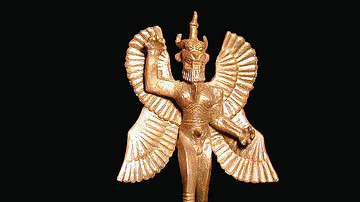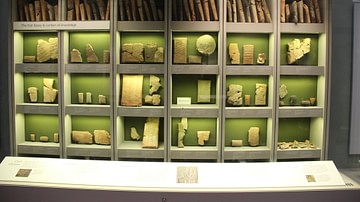Search
Search Results

Article
Battles & Conquests Of The Ottoman Empire (1299-1683)
Spanning across three continents and holding dominance over the Black and Mediterranean Seas, the Ottoman Sultanate (1299-1922) was a global military superpower between the 15th and 17th centuries. From the point of its inception in 1299...

Video
The Babylonian mind
Trace the legacy of Babylonian discoveries and ideas, including their mathematical system based on 60 and their desire to predict the future. With British Museum curator Irving Finkel. http://www.britishmuseum.org/about_this_site/audio_and_video/exhibitions_-_archive/babylon_-_video_archive/babylonian_mind_video.aspx...

Video
Cradles of Civilization - Babylonian Math
In the sixth segment of Dr. Neiman's second lecture, he reviews Babylonian advances in astronomy and mathematics. He also credits the Babylonians with devising some of civilization's most basic concepts: dividing the circle into 360 degrees...

Video
82nd & Fifth: Babylonian Lions
http://82nd-and-fifth.metmuseum.org/bricks Explore this object: http://82nd-and-fifth.metmuseum.org/two-panels-with-striding-lions-babylonian-31.13.1-.2 "It always had this possibility to come alive in a very real sense." 82nd &...

Definition
Gurjara-Pratihara Empire
The Gurjara-Pratiharas, or simply, the Pratiharas (8th century CE - 11th century CE) held their sway over western and northern India. This dynasty saw its fortunes rising under Nagabhata I (730–760 CE) who successfully defeated Arab invaders...

Article
The Newly Discovered Tablet II of the Epic of Gilgamesh
Surpassing all other kings, heroic in stature, brave scion of Uruk, wild bull on the rampage! Going at the fore he was the vanguard, going at the rear, one his comrades could trust! (Prologue, Tablet I, The Epic of Gilgamesh...

Definition
Mesopotamian Government
Ancient Mesopotamian government was based on the understanding that human beings were created to help and serve the gods. The high priest, king, assembly of elders, governors, and any other officials were recognized as stewards chosen by...

Definition
Ancient Persian Government
The government of ancient Persia was based on an efficient bureaucracy which combined the centralization of power with the decentralization of administration. The Achaemenid Empire (c. 550-330 BCE) founded by Cyrus the Great (r. c. 550-530...

Definition
Pazuzu
Pazuzu is an Assyrian/Babylonian demonic god who was most popular in the first millenium BCE. He was the son of Hanbi (also Hanba), king of the demons of the underworld, and brother to Humbaba, the demon-god protector of the Cedar Forest...

Definition
Library of Ashurbanipal
The Library of Ashurbanipal (7th century BCE) is the oldest known systematically organized library in the world, established in Nineveh by the Neo-Assyrian king Ashurbanipal (r. 668-627 BCE) to preserve the history and culture of Mesopotamia...